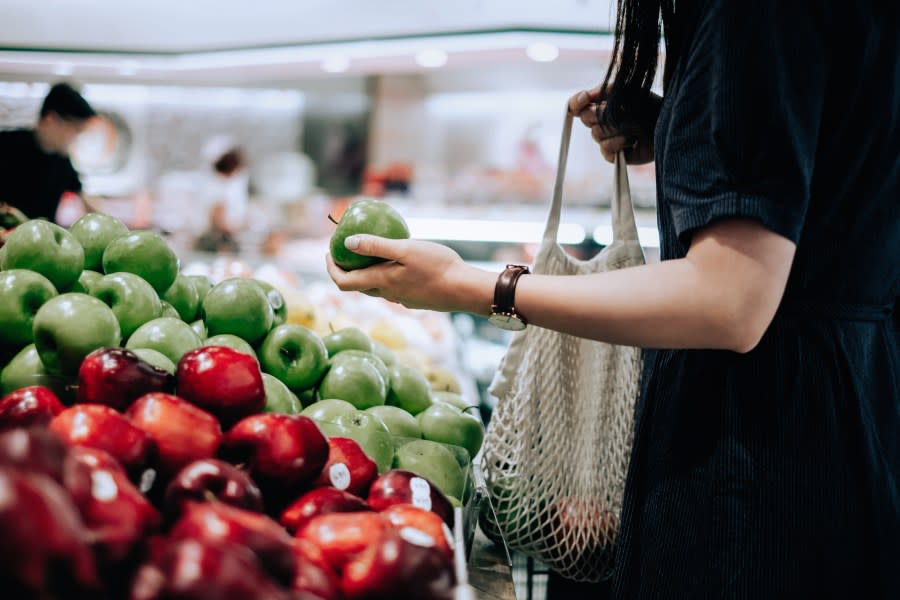City of Austin tries to address food availability, equality with plan

AUSTIN (KXAN) — The City of Austin completed the first draft of its food plan for Austin and Travis County.
According to the city, a food plan “sets clear goals and strategies to move toward a more equitable, sustainable, and resilient food system and provides a coordinating structure for all food-related initiatives.”
In June 2021, the Austin City Council passed a resolution directing the development of a five-year food plan.
“This idea that we can actually think intentionally about how our food system works is sort of a new concept.”
Edwin Marty, City of Austin Food Policy Manager
The Travis County Commissioners Court voted to formally join the process in December 2022.
Since then, they’ve collected thousands of pieces of feedback from the community.
After gathering community input, the City of Austin’s Office of Sustainability identified nine major goals for its plan that’s meant to address food availability and equality.
The City of Austin’s Food Policy Manager Edwin Marty said the catalysts for this plan were things like the pandemic and the 2021 winter storm.
“COVID happened and then Winter Storm Uri happened,” Marty said. “A lot of people for the first time woke up and said, ‘Oh my gosh, what do we do if the grocery stores aren’t open?'”
The goals include:
Preservation of land for food production
Increase access to farmland for underrepresented communities
Improve quality of life for food and farm workers
Make the local food system more resilient
Improve the local food supply chain
Expand access to quality food
Decrease food waste
Address environmental concerns related to food production and transport
Increase awareness of the impact of the food system in local quality of life
Marty said a topic they heard across the board was the need to address food waste.
“It’s not good for the greenhouse gas emissions, but it’s also a waste of time and money,” Marty said. “We’re throwing away good food. That’s a real mistake.”
The draft plan is available for feedback until April 19.
The first online discussion is scheduled for Wednesday. Participants must register for the meeting first.
Marty said they hope to get a final plan in front of city council and county commissioners by this Summer.
This plan would be the first of its kind for the area.
Local food production
Marty said when it comes to local food production, the county is losing farmland at an unprecedented rate.
“Probably in five years, there just won’t be any farmland left in Travis County,” Marty said.
A goal in this plan is to expand community food production, preserve agricultural lands, and increase the amount of farmland dedicated to regenerative agriculture long-term.
Currently, Marty said very little food is actually produced in Austin and Travis County.
“The statistic is kind of staggering. It’s .06% of the food that we eat is produced locally. That number is actually going down.”
Edwin Marty, City of Austin Food Policy Manager
Marty said the area is losing about 16 to 17 acres of farmland everyday, which is why they have a goal to preserve more of that land.
“We need housing. Yes, we need development,” Marty said. “If we don’t, at this point, prioritize at least some part of our infrastructure and our land base for farmland, we’re not going to have any food production locally.”
Addressing ‘food deserts’
Michelle Fearon didn’t go to the grocery store much growing up in south Austin.
“Such an ordeal just to get to the grocery store and go through that whole process,” Fearon said.
Things didn’t get much better when she moved to the Montopolis area, where Fearon said there are mostly smaller food stores.
“The food deserts that we have around town. It’s going to drive a lot of people not to those areas.”
Michelle Fearon
There’s an H-E-B about two miles from that neighborhood on East Riverside Drive. However, Fearon said getting there might not be easy for some.
“What if you don’t have a car? Then you’re walking or taking a bus,” Fearon said. “You’re having to pack all your weekly groceries on public transportation.”
For people living in Del Valle, that drive is much longer.
RELATED COVERAGE: Free fridge opens in Del Valle food desert
According to data from the City of Austin, Del Valle’s population is around 3,200 people.
Although the town is growing, people there are driving 10-15 miles to reach that H-E-B on East Riverside Drive.
Marty said getting more grocery stores is more of a private sector thing. He said it’s up to a company to decide if they want to open a store in a specific location.
The city and county are looking at other ways to address this issue in the plan.
“We need to do everything possible to increase incentives for new food retail. We also need to look at some non-traditional options,” Marty said. “Farm stands, farmer’s markets, mobile grocery.”
For the latest news, weather, sports, and streaming video, head to KXAN Austin.

